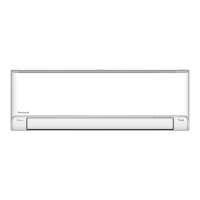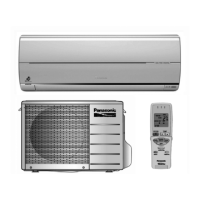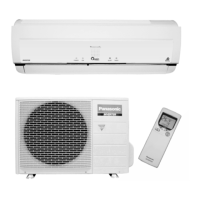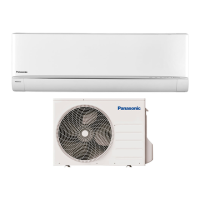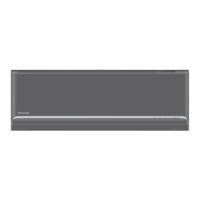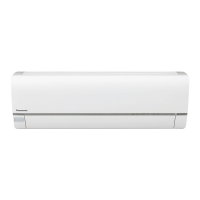27
Safety Precautions
f) Precautions shall be taken to avoid
excessive vibration or pulsation to
refrigerating piping.
g) Ensure protection devices, refrigerating
piping and fittings are well protected
against adverse environmental effects
(such as the danger of water collecting and
freezing in relief pipes or the accumulation
of dirt and debris).
h) Expansion and contraction of long runs
piping in refrigerating systems shall be
designed and installed securely (mounted
and guarded) to minimize the likelihood
hydraulic shock damaging the system.
i) Protect the refrigerating system from
accidental rupture due to moving furniture
or reconstruction activities.
j) To ensure no leaking, field-made refrigerant
joints indoors shall be tightness tested.
The test method shall have a sensitivity of
5 grams per year of refrigerant or better
under a pressure of at least 0.25 times the
maximum allowable pressure (>1.04 MPa,
max 4.15 MPa). No leak shall be detected.
1. Installation (Space)
• Product with flammable refrigerants, shall
be installed according to the minimum room
area, A
min
(m²) mentioned in Table A of the
Installation Instructions.
• In case of fi eld charge, the effect on
refrigerant charge caused by the different pipe
length has to be quantifi ed, measured and
labelled.
• Must ensure the installation of pipe-work shall
be kept to a minimum. Avoid use dented pipe
and do not allow acute bending.
• Must ensure that pipe-work shall be protected
from physical damage.
• Must comply with national gas regulations,
state municipal rules and legislation. Notify
relevant authorities in accordance with all
applicable regulations.
• Must ensure mechanical connections be
accessible for maintenance purposes.
• In cases that require mechanical ventilation,
ventilation openings shall be kept clear of
obstruction.
• When disposal of the product, do follow to the
precautions in #12 and comply with national
regulations.
Always contact to local municipal offi ces for
proper handling.
2. Servicing
2-1. Service personnel
• The system is inspected, regularly supervised
and maintained by a trained and certifi ed
service personnel who is employed by the
person user or party responsible.
• Ensure the actual refrigerant charge is in
accordance with the room size within which
the refrigerant containing parts are installed.
• Ensure refrigerant charge not to leak.
• Any qualifi ed person who is involved with
working on or breaking into a refrigerant
circuit should hold a current valid certifi cate
from an industry-accredited assessment
authority, which authorizes their competence
to handle refrigerants safely in accordance
with an industry recognised assessment
specifi cation.
• Servicing shall only be performed
as recommended by the equipment
manufacturer. Maintenance and repair
requiring the assistance of other skilled
personnel shall be carried out under the
supervision of the person competent in the
use of fl ammable refrigerants.
• Servicing shall be performed only as
recommended by the manufacturer.
2-2. Work
• Prior to beginning work on systems containing
fl ammable refrigerants, safety checks are
necessary to ensure that the risk of ignition
is minimised. For repair to the refrigerating
system, the precautions in #2-2 to #2-8 must
be followed before conducting work on the
system.
• Work shall be undertaken under a controlled
procedure so as to minimize the risk of a
fl ammable gas or vapour being present while
the work is being performed.
• All maintenance staff and others working
in the local area shall be instructed and
supervised on the nature of work being
carried out.
• Avoid working in confi ned spaces. Always
ensure away from source, at least 2 meter of
safety distance, or zoning of free space area
of at least 2 meter in radius.
• Wear appropriate protective equipment,
including respiratory protection, as conditions
warrant.
• Keep all sources of ignition and hot metal
surfaces away.
English
